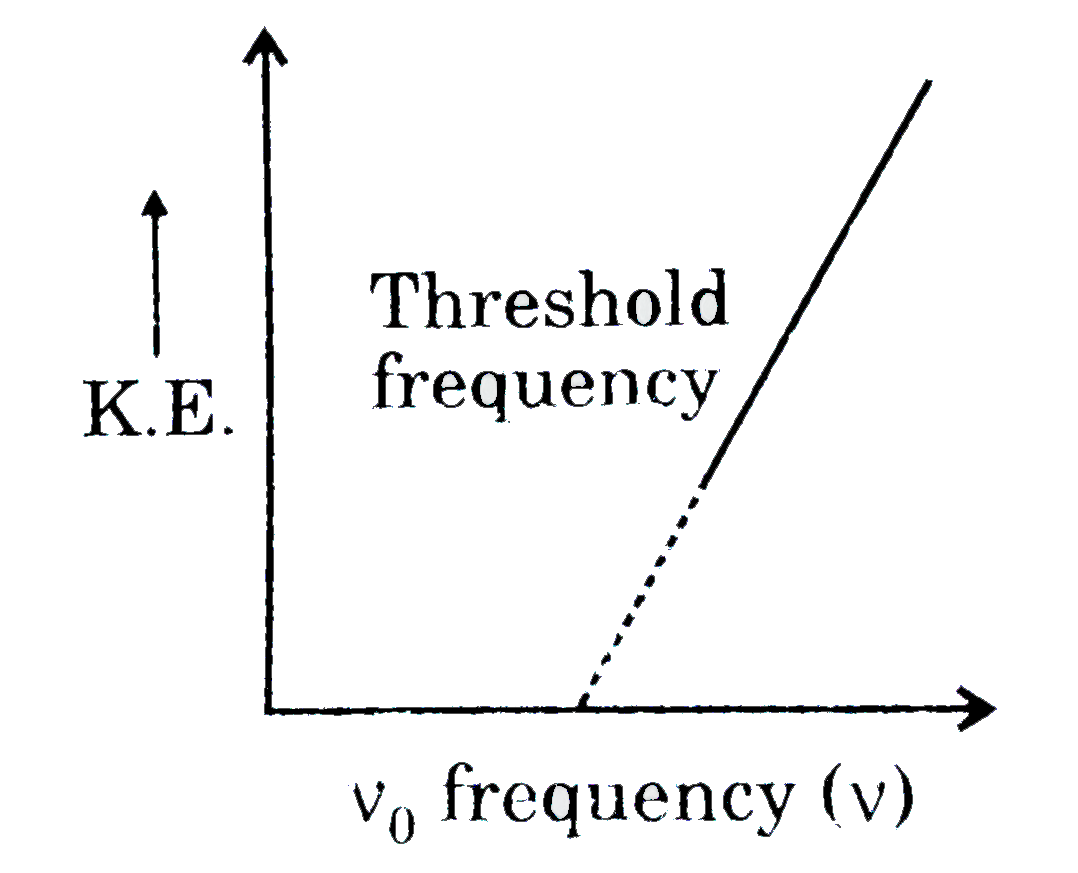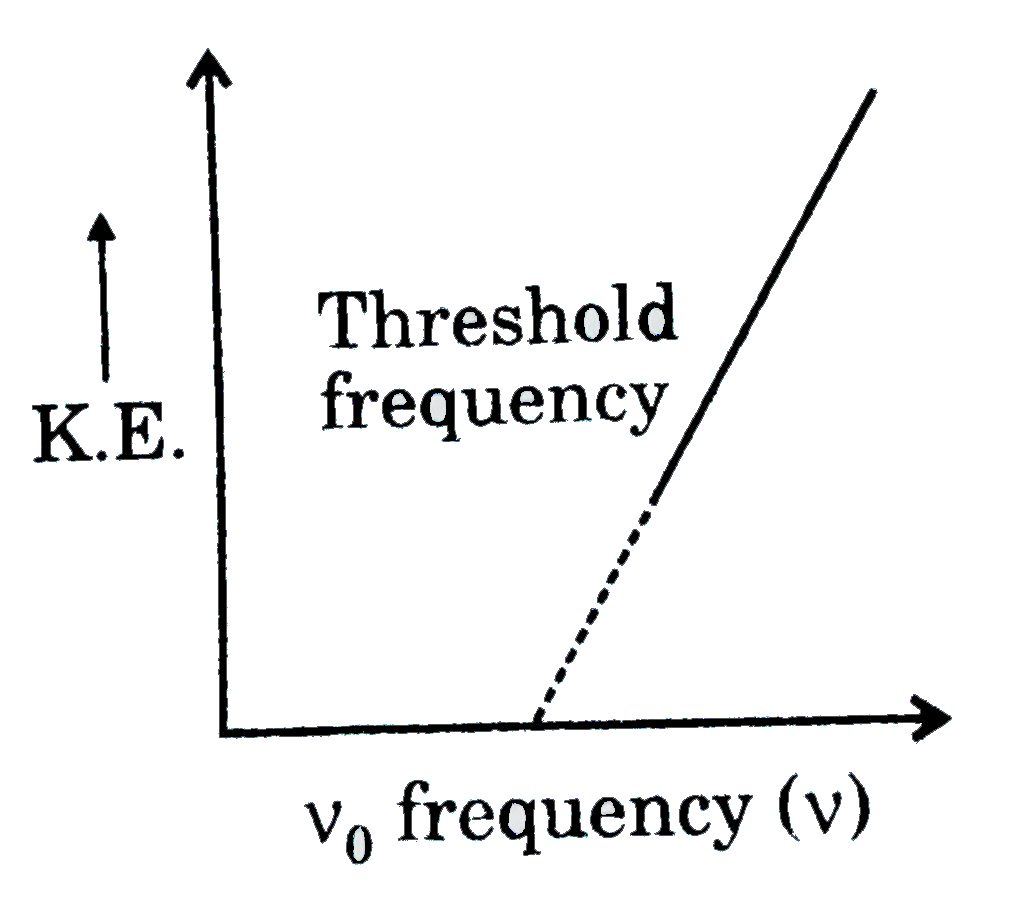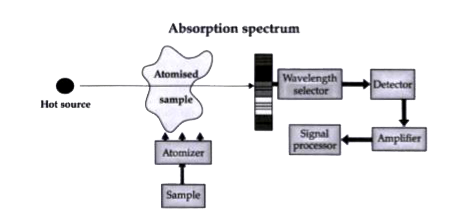In the photoelectric effect, if the frequency of the radiation is below a certain cutoff value, no photoelectrons will be observed no matter how intense the radiation is. Why does this fact favour a particle theory of light over a wave theory?
Step by step video & image solution for In the photoelectric effect, if the frequency of the radiation is below a certain cutoff value, no photoelectrons will be observed no matter how intense the radiation is. Why does this fact favour a particle theory of light over a wave theory? by Physics experts to help you in doubts & scoring excellent marks in Class 12 exams.
Updated on:21/07/2023Topper's Solved these Questions
- PHOTOELECTRIC EFFECT AND MATTER WAVESBook:PHYSICS GALAXY - ASHISH ARORAChapter:PHOTOELECTRIC EFFECT AND MATTER WAVESExercise:Conceptual MCQ
Explore 27 Videos
- PHOTOELECTRIC EFFECT AND MATTER WAVESBook:PHYSICS GALAXY - ASHISH ARORAChapter:PHOTOELECTRIC EFFECT AND MATTER WAVESExercise:Numerical MCQs
Explore 60 Videos
- PHOTOELECTRIC EFFECT AND MATTER WAVESBook:PHYSICS GALAXY - ASHISH ARORAChapter:PHOTOELECTRIC EFFECT AND MATTER WAVESExercise:Unsolved numerical problems
Explore 42 Videos
- NUCLEAR PHYSICS AND RADIOACTIVITYBook:PHYSICS GALAXY - ASHISH ARORAChapter:NUCLEAR PHYSICS AND RADIOACTIVITYExercise:Concptual MCQs
Explore 48 Videos
- THERMODYNAMICS LAWS & SPECIFIC HEATS OF GASES Book:PHYSICS GALAXY - ASHISH ARORAChapter:THERMODYNAMICS LAWS & SPECIFIC HEATS OF GASES Exercise:Practice Exercise 3.4
Explore 11 Videos
Similar Questions
Why is wave theory of electromagnetic radiation not able to explain photo electric effect ? How does photon picture resolve this problem ?
View SolutionFor a given photosensitive material and with a source of constant frequency of incident radiation, how does the photocurrent vary with the intensity of incident light ?
View Solution
Knowledge Check
Assertion: Photoelectric effect shows both the wave like and particle like behaviour of light.
Reason : Wave nature of matter is not visible in our daily observations.AAssertion is True, Reason is True,
Reason is a correct explanation for Assertion.BAssertion is True, Reason is True,
Reason is not a correct explanation for Assertion.CAssertion is True, Reason is False.DAssertion is False but, Reason is True.Which of the following statements about photoelectric effict is/are false ?
(i) It exhibits the particle nature
(ii) Electrons are emitted only if the radiation has a frequency above a certain value
(iii) All the electrons emitted by radiation of a particular frequency have the same energy
(iv) Changing the intensity of radiation changes the maximum energy with which the electrons can be emittedA(i),(ii)B(ii),(iii)C(i),(iv)D(iii),(iv)Photoelectric effect supports quantum nature of light because
(a) there is a minimum frequency of light below which no photoelectrons are emitted
(b) the maximum kinetic energy of photoelectrons depends only on the frequency of light and not onits intensity
(c ) even when the metal surface is faintly illuminated, the photoelectrons leave the surface immediately
(d) electric charge of the photoelectrons is quantisedAthere is a minum freqwuency below which no photoelectrons are emittedBthe maximum kinetic erngy fo the photoelectorns depends only on the frequency fo light and not on its intensityCeve when the metal surface si fiantyl illuminated the photoelectrons levae the surfae immeditelyDelectric charge fo thephotelcteons is quantixzwed
(a) Photoelectric threshold of metallic silver is λ=3800Å. Ultravilolet light of λ=260 nm is incident on silver surface. Calculate :
(i) the value of work function in joule and eV
Kmax of the emitted photoelectrons
(iii) vmax of the photoelectrons
(b) Ultraviolet light of wavelength 280 nm is used in an experiment on photoelectric effict with lithium (ϕ=2.5eV) cathode. Find
(i) the maximum kinetic energy of the photoelectrons
(ii) the stopping potential
(c) Find the maximum magnitude of the linear momentum of a photelectron emitted when light of wavelength 400 nm falls on a metal (ϕ=2.5eV).
(d) A monochromitc light source of intensity 5 mW emits 8×105 photons per second. This light ejects photoelectrons from a metal surface. The stopping potential for this set up is 2.0V . Calculate the work function of the metal.
(e) The maximum kinetic energy of photoelectrons emitted from a certain metallic surface is 30 eV when imonochromatic radiation of wavelength λ falls on it. When the same surface is illuminated with light of wavelength 2λ the maximum kinetic energy of photo electrons is observed to be 10 eV. Calculate the wavelength λ and determine the maximum wavelength of incident radiation for which photoelectrons can be emitted by this surface.
View SolutionIn the photoelectric effect the eletrons are emiited intantaneously from a given matal plate when it is irradiated with radiation of frequency equal to or greater then some minimum ferquency, is called the threshold frequency.According to Planck's idea, light may be considered to be made up discrete particles called photons.Each photon carries energy equal ti hv.When this photon cllides with the electron of the metal, the electron acquires energy of the emitted electron is given by :
hv=K.Emaximum+PE=12mu2+PE
If the incident rediation is of threshold frequency the electron will be emitted without any kinetic energy
i.e hv0
∴12mu2=hv−hv0
A plot of kinetic energy of the emitted electron versus frequency of the incident radiation yields a straight line given as :

A laser producting monochromatic lights of different wavelenght is uesd to eject electrons from the sheet of glod having threshold frequency 6.15×1014s−1 Which of the following incident rediation will be suitable for the ejecting of electrons ?
View SolutionIn the photoelectric effect the eletrons are emiited intantaneously from a given matal plate when it is irradiated with radiation of frequency equal to or greater then some minimum ferquency, is called the threshold frequency.According to Planck's idea, light may be considered to be made up discrete particles called photons.Each photon carries energy equal ti hv.When this photon cllides with the electron of the metal, the electron acquires energy of the emitted electron is given by :
hv=K.Emaximum+PE=12mu2+PE
If the incident rediation is of threshold frequency the electron will be emitted without any kinetic energy
i.e hv0
∴12mu2=hv−hv0
A plot of kinetic energy of the emitted electron versus frequency of the incident radiation yields a straight line given as :

The number of photoelectrons emitted depends upon :
View SolutionIn the photoelectric effect the eletrons are emiited intantaneously from a given matal plate when it is irradiated with radiation of frequency equal to or greater then some minimum ferquency, is called the threshold frequency.According to Planck's idea, light may be considered to be made up discrete particles called photons.Each photon carries energy equal ti hv.When this photon cllides with the electron of the metal, the electron acquires energy of the emitted electron is given by :
hv=K.Emaximum+PE=12mu2+PE
If the incident rediation is of threshold frequency the electron will be emitted without any kinetic energy
i.e hv0
∴12mu2=hv−hv0
A plot of kinetic energy of the emitted electron versus frequency of the incident radiation yields a straight line given as :

A beam of white light is dispersed into its wavelenght components of potassium metal. What of the electron emitted by the different light component ?
View SolutionRead the following text and answer the following questions on the basis of the same:
Atomic Absorption Spectrometer: The atomic absorption (AA) spectrometer is used to analyze metals at very low concentrations, typically in the parts per million (ppm) or parts per billion (ppb) ranges. A liquid sample containing dissolved material whose concentration is to be measured is aspirated into a thin, wide AA flame, or is introduced into a small carbon furnace which is heated to a high temperature.

Basic Principle of AAS is the measurement of absorption of radiation by free atoms. The total amount of absorption depends on the number of free atoms present and the degreee to which the free atoms absorb the radiation. At the high temperature of the AA flame, the sample is broken down into atoms using an atomizer and it is the concentration of these atoms that is measured. Sample in the form of solution is used. It is broken up into a fine mist with the help of an atomizer. When the mist reaches the flame, the intense heat breaks up the sample into its individual atoms. When a photon coming out from the hot source hits an atom and the energy of the photon is equal to the gap between two electron energy levels of the atom, then the electron in the lower energy level absorb the photon and jumps up to the higher energy level. If the photon energy does not correspond to the difference between two energy levels, then the photon will not be absorbed (it may be scattered away). Hence in the spectrum, the wavelength corresponding to the absorbed photons is observed as black lines as shown in the following spectrum of Hydrogen. The dark lines correspon to the frequencies of light those have been absorbed by the sample element. Using this process, a source of photons (generally a white light) of various energies is used to obtain the absorption spectra of different materials and to identify them.
How the sample for analysis is deriven to atomic state in AAS?
View Solution